Core App Walkthrough
Model-Driven App
This page describes the model-driven app functionality in the Core module.
Walkthrough
In this walkthrough, we’ll review the features and functionality available in the Microsoft Federal Core Utility App.
This app is part of the Microsoft Federal Application Starter Templates, an open-source library specifically designed to help you accelerate your mission modernization, using Microsoft’s low code platform, Power Apps.
Purpose
The Core Utility App provides a user interface for you and your organization to manage common records, reference data, and other lookup information used across the enterprise. It is based on the Government Common Data Model Core solution, allowing you to add and manage reference information common to multiple apps.
This app is intended to be used alongside other modules, to help you centralize and manage multiple common data sets in a single place.
Navigation
Within the app, you’ll see a number of sections available within the main navigation. These sections are People, Places, Things, and Legal and Compliance. Clicking into these sections will allow you to view dashboards, manage records, and more. Let’s review these together in more detail.
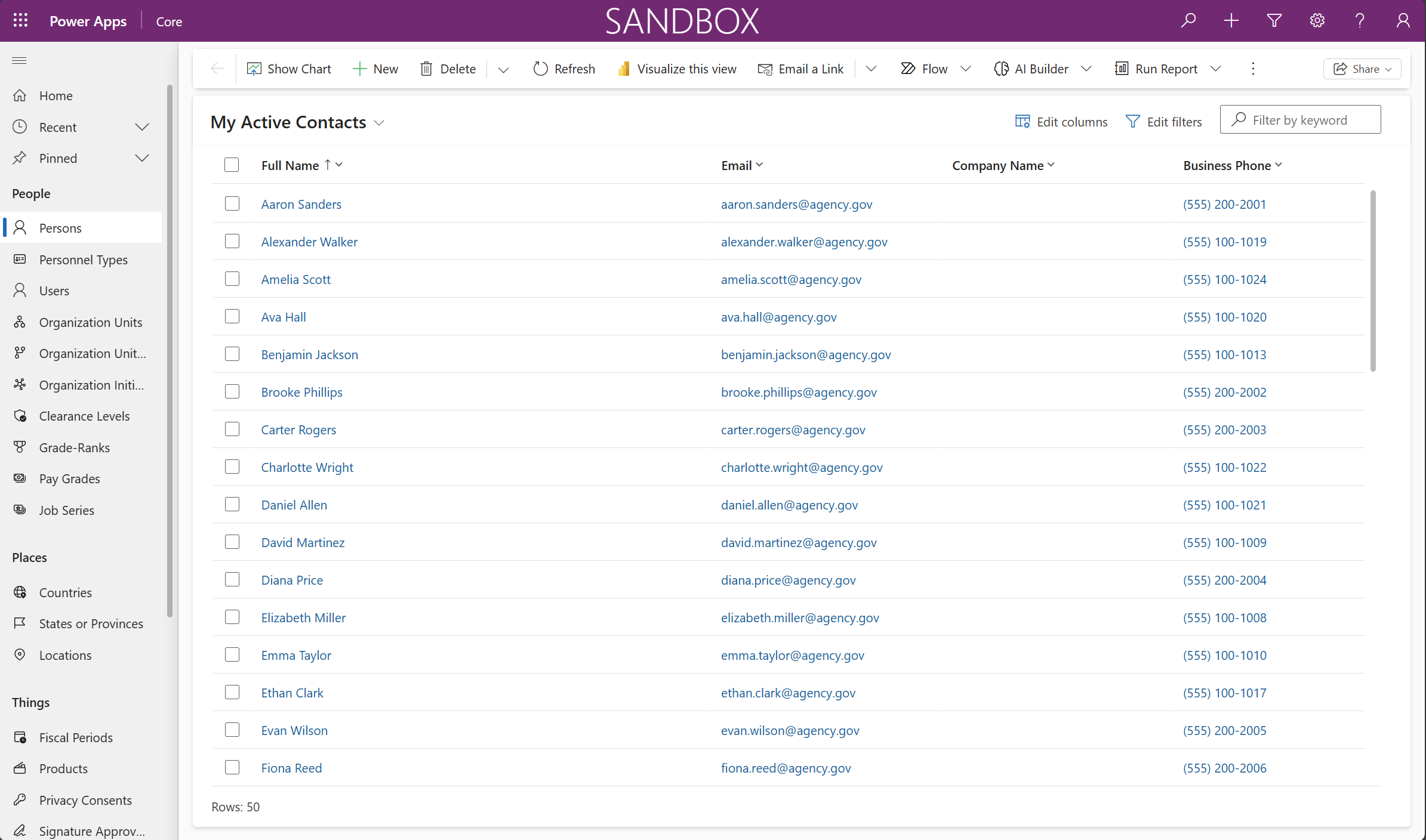
People
First up is the People section. Navigating into each area withing the People section will display a list of records for that area. Sample data displayed in each of these areas is available for you to download for test environments.
The Persons area allows you to manage individuals within and external to your organization, for various processes.
Personnel Types
Personnel Types categorize individuals based on their employment or affiliation with a federal agency, such as federal employees, contractors, or military personnel. This classification supports access management, benefits eligibility, and organizational reporting.
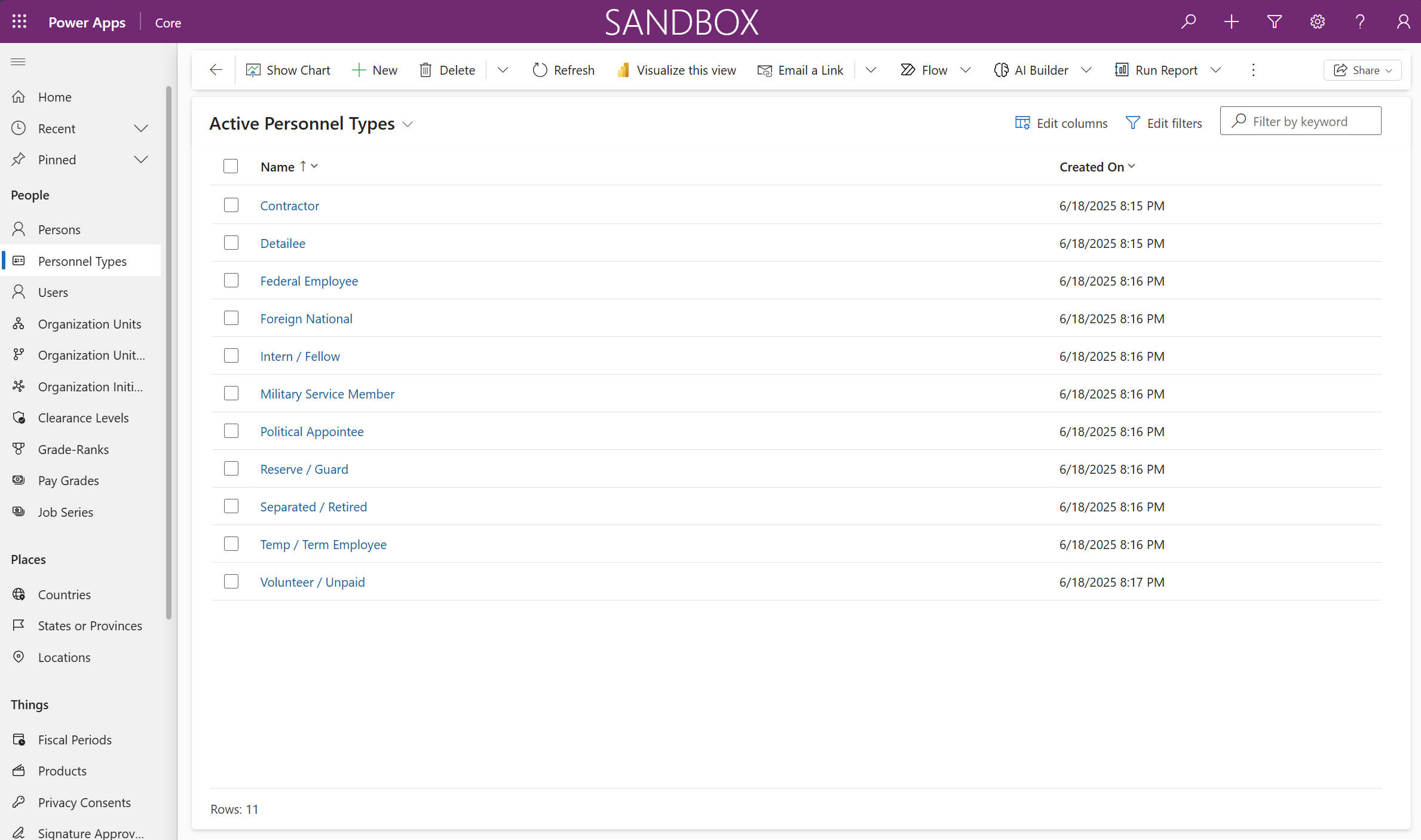
Organization Units
Use Organization Units to represent the various departments, divisions, offices, and other structure of your organization. You can model a hierarchy of organization units, by using the Parent Organization field.
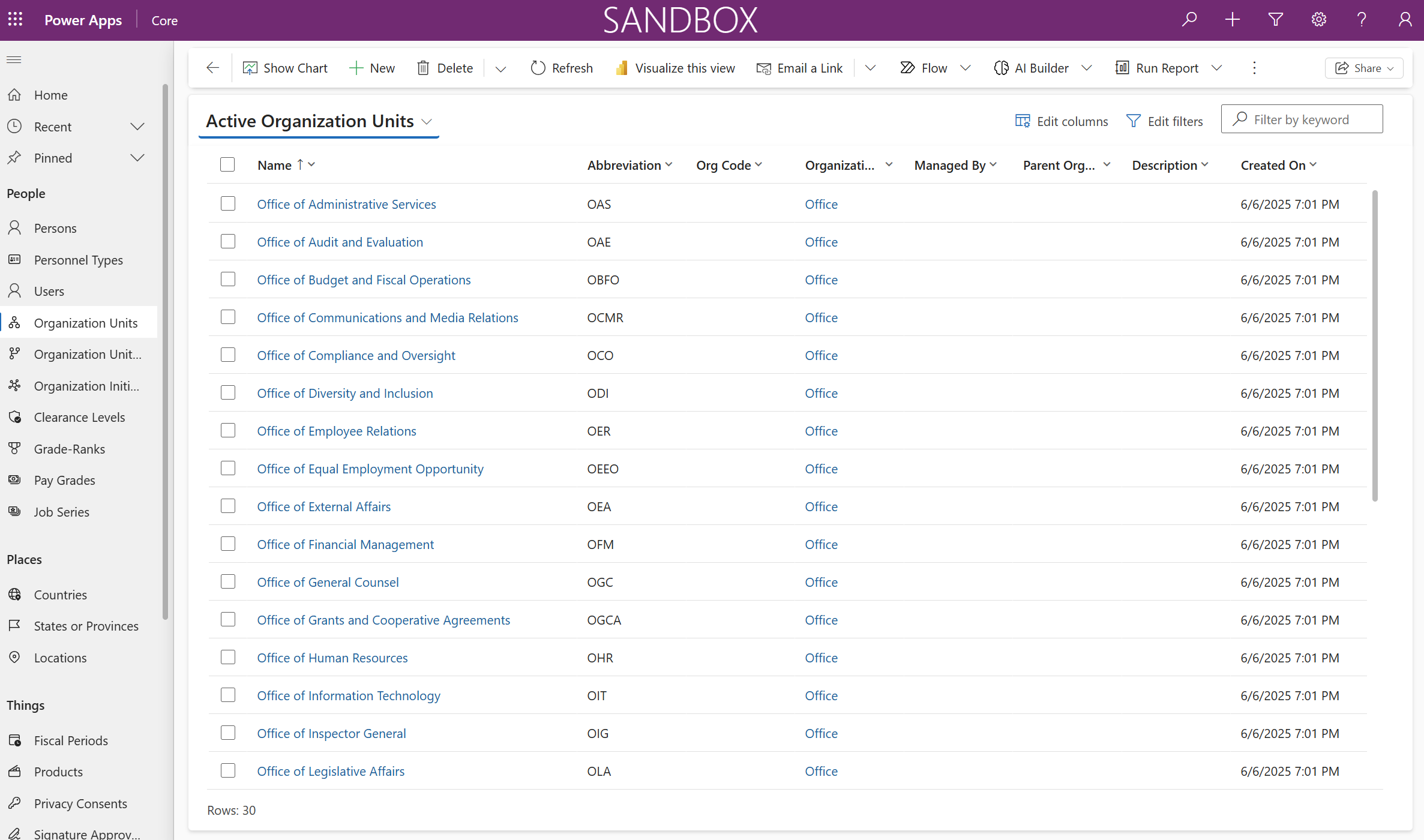
Organization Unit Types
Organization Unit Types allow you to specify the various types of organization units at your agency.

Organization Initiatives
Use Organization Initiatives to track key agency efforts, programs, or strategic priorities. This reference supports alignment of personnel, resources, and activities to mission-driven initiatives across the organization.
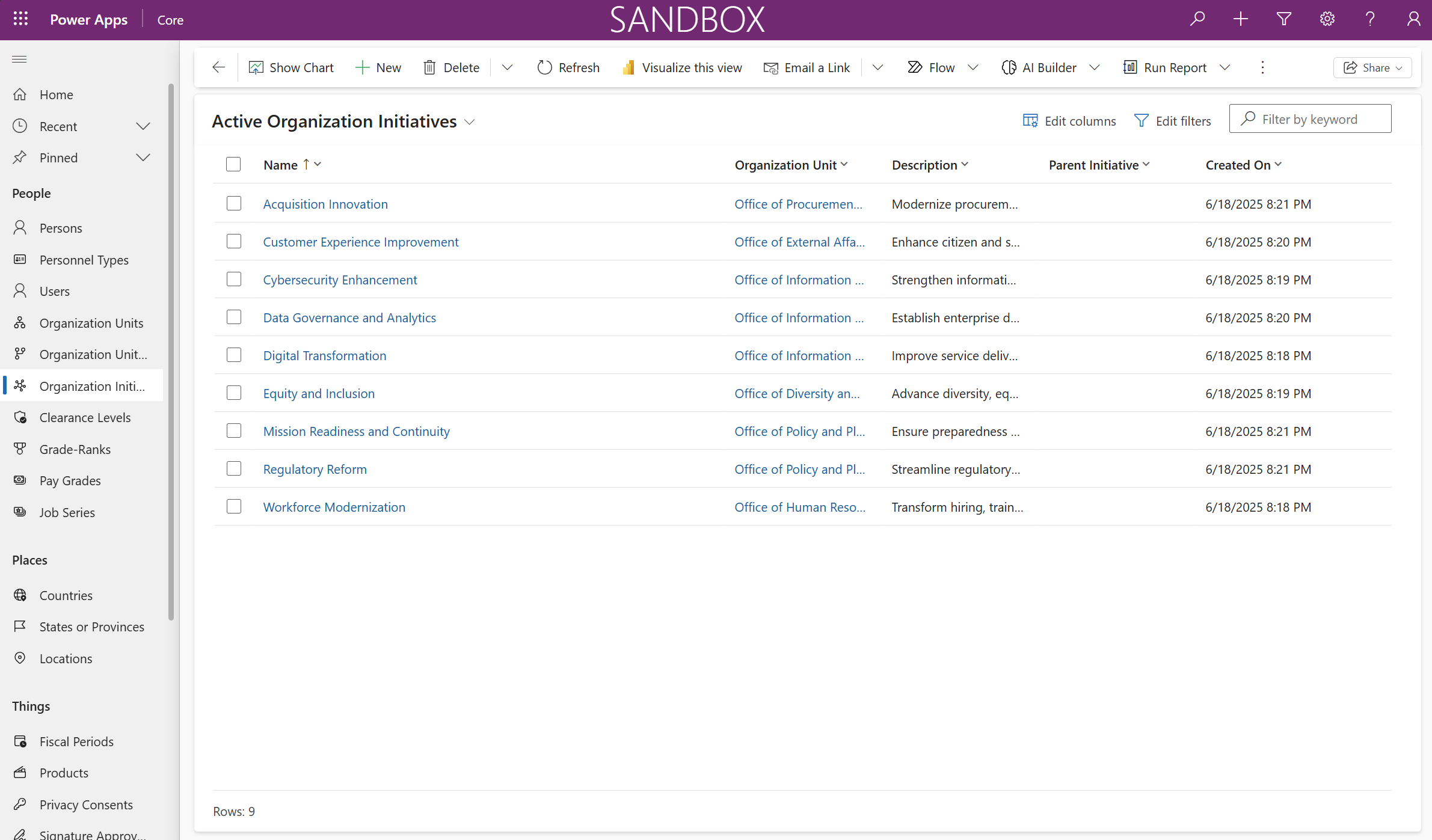
Clearance Levels
Clearance Levels define the degree of access an individual is authorized to have to classified or sensitive information within a federal organization.
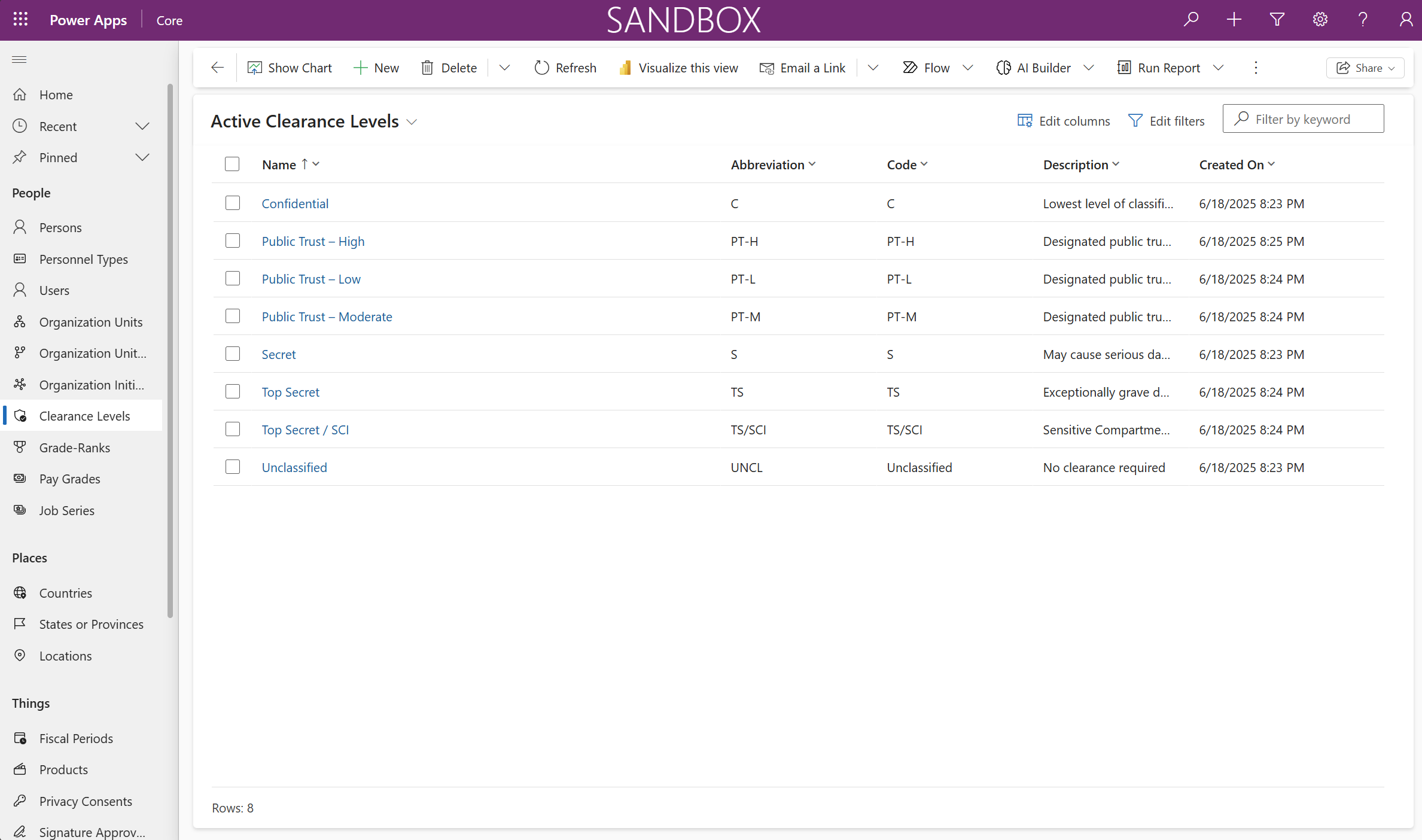
Grade Ranks
Grade-Ranks represent the official classification of federal personnel by grade level or military rank. They are used to determine position authority, responsibilities, and pay scale within federal agencies and the armed forces.

Pay Grades
Pay Grades classify federal and military positions by standardized pay scales, determining compensation levels across different roles, agencies, and services. They support budgeting, HR management, and parity across personnel systems.
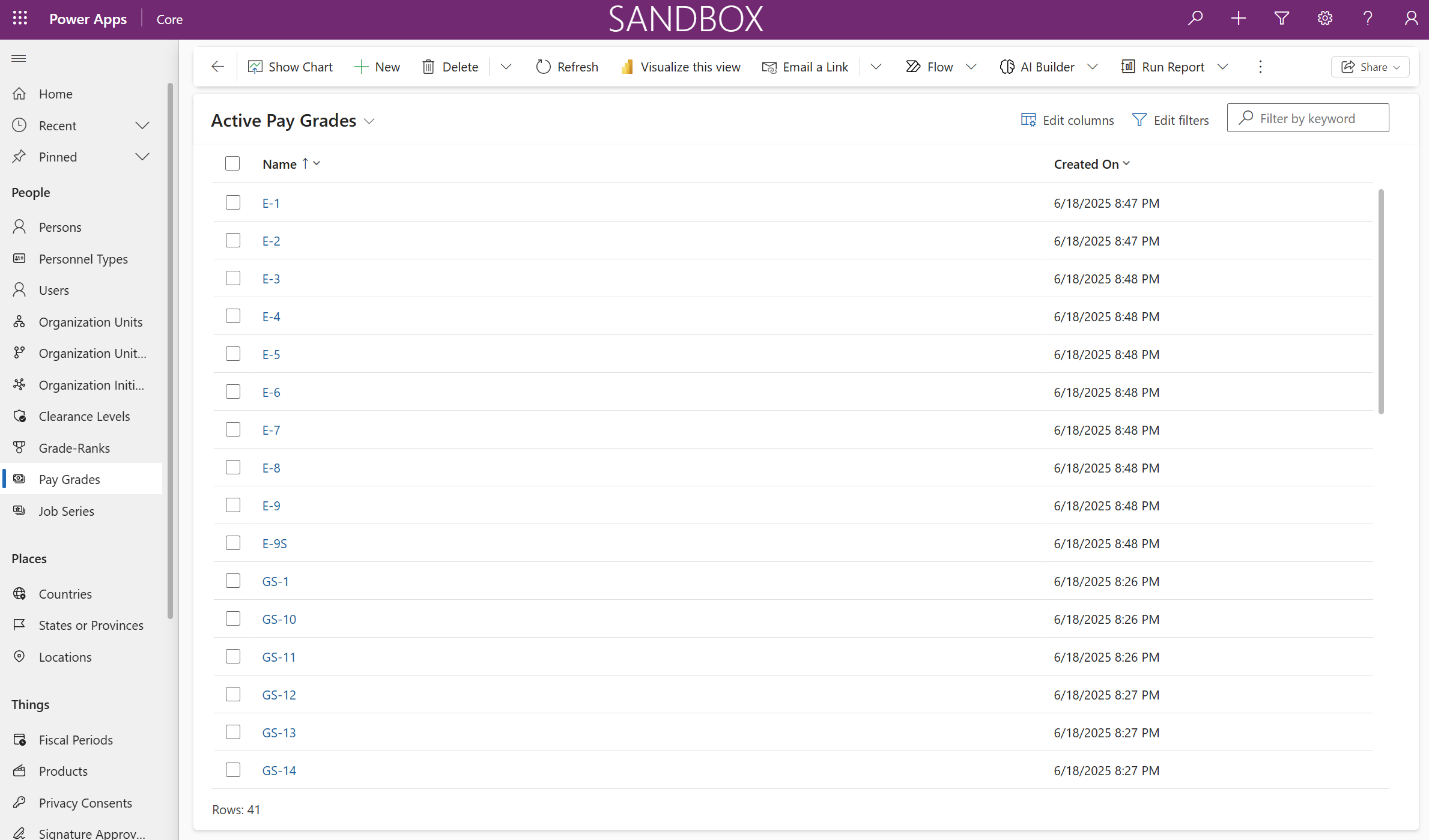
Job Series
Job Series are four-digit codes used by the U.S. Office of Personnel Management (OPM) to classify federal positions by occupational family and specialized function. They help define job duties, qualification standards, and career paths across agencies.
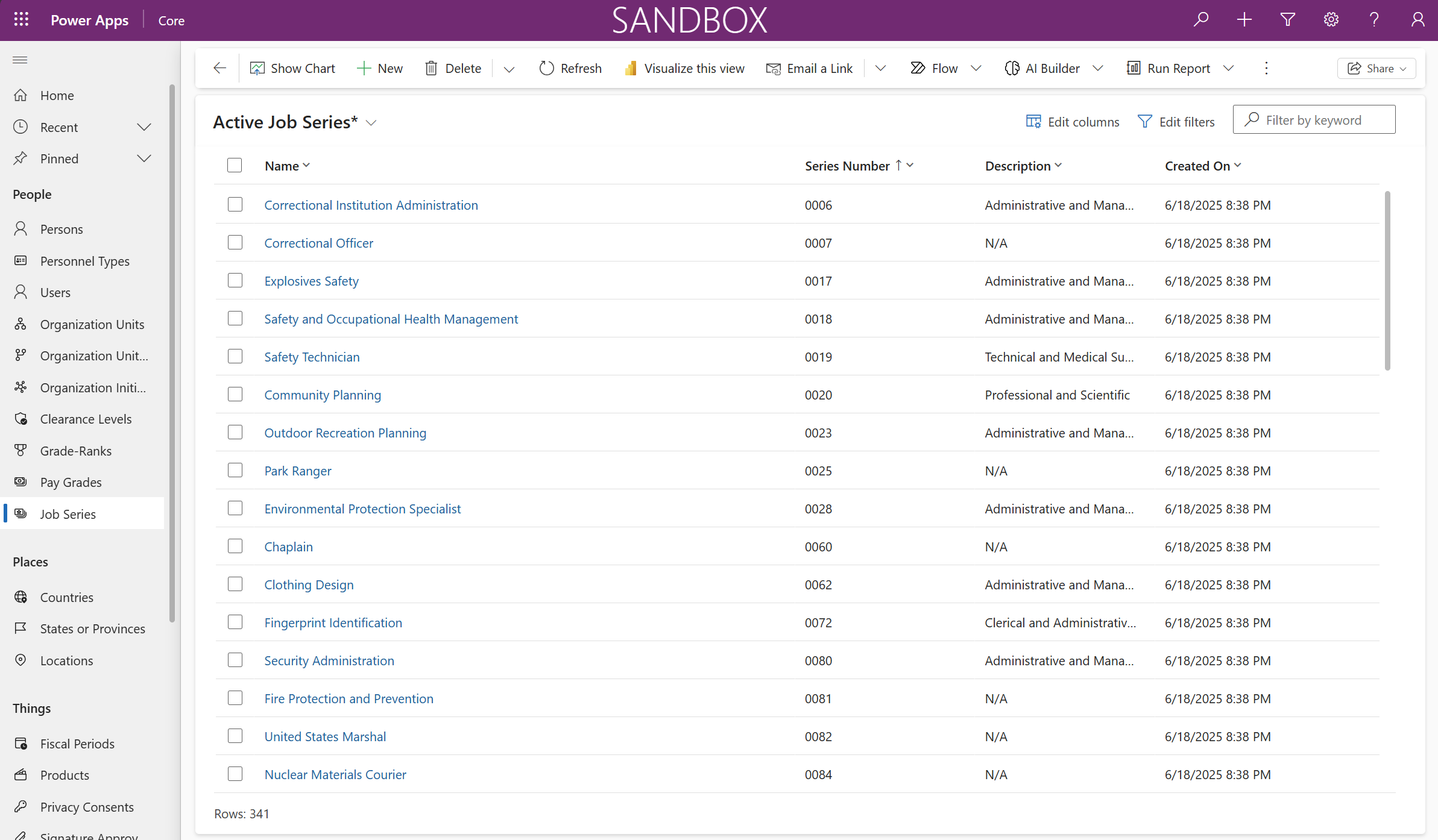
Places
In the Places section, you’ll find Countries, States or Provinces, and Locations. These areas provide standardized references for physical and geopolitical places. These are essential for identifying addresses, determining jurisdictional boundaries, managing assignments or facilities, and supporting reporting and compliance across agencies.
Countries
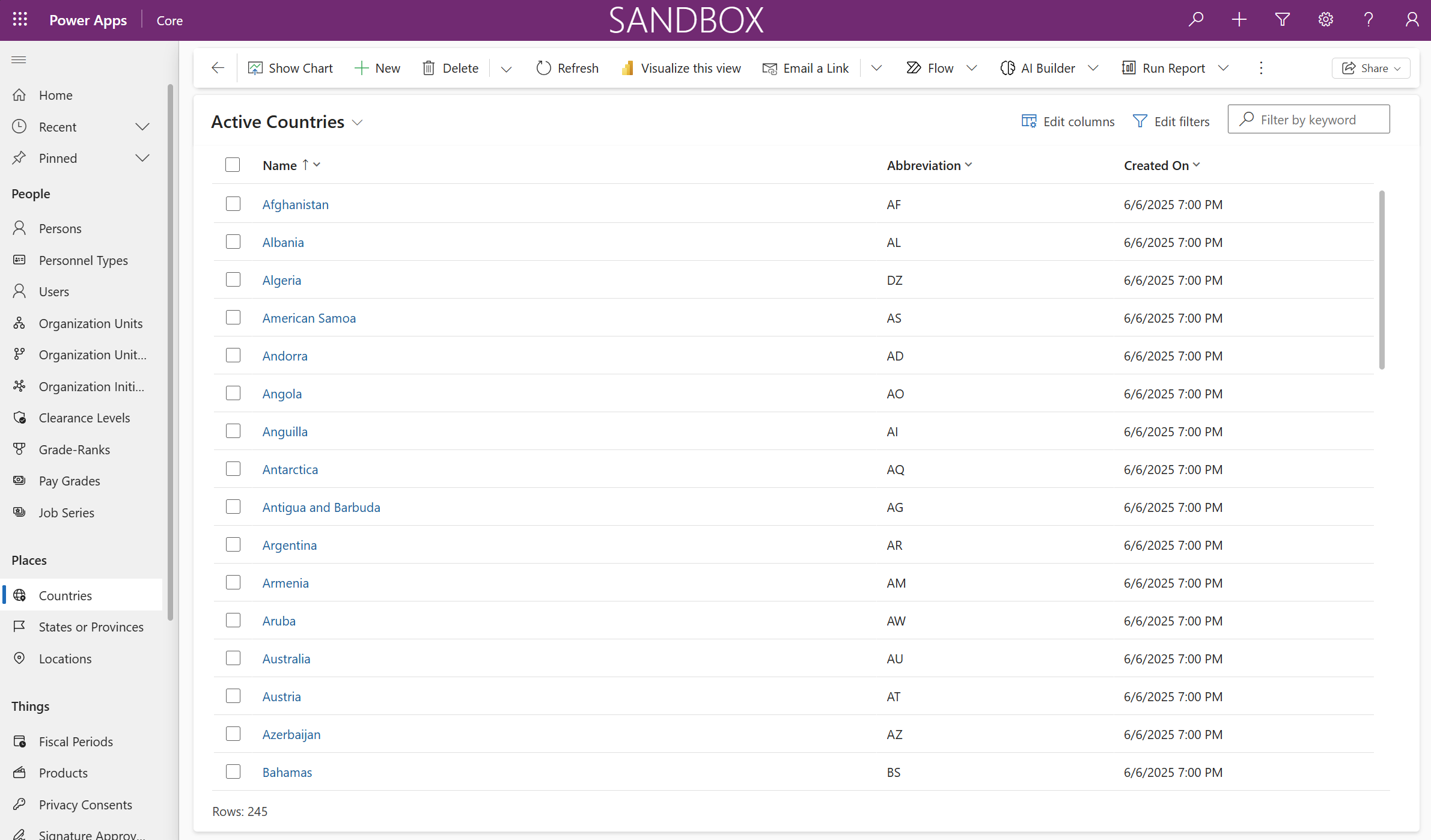
States or Provinces
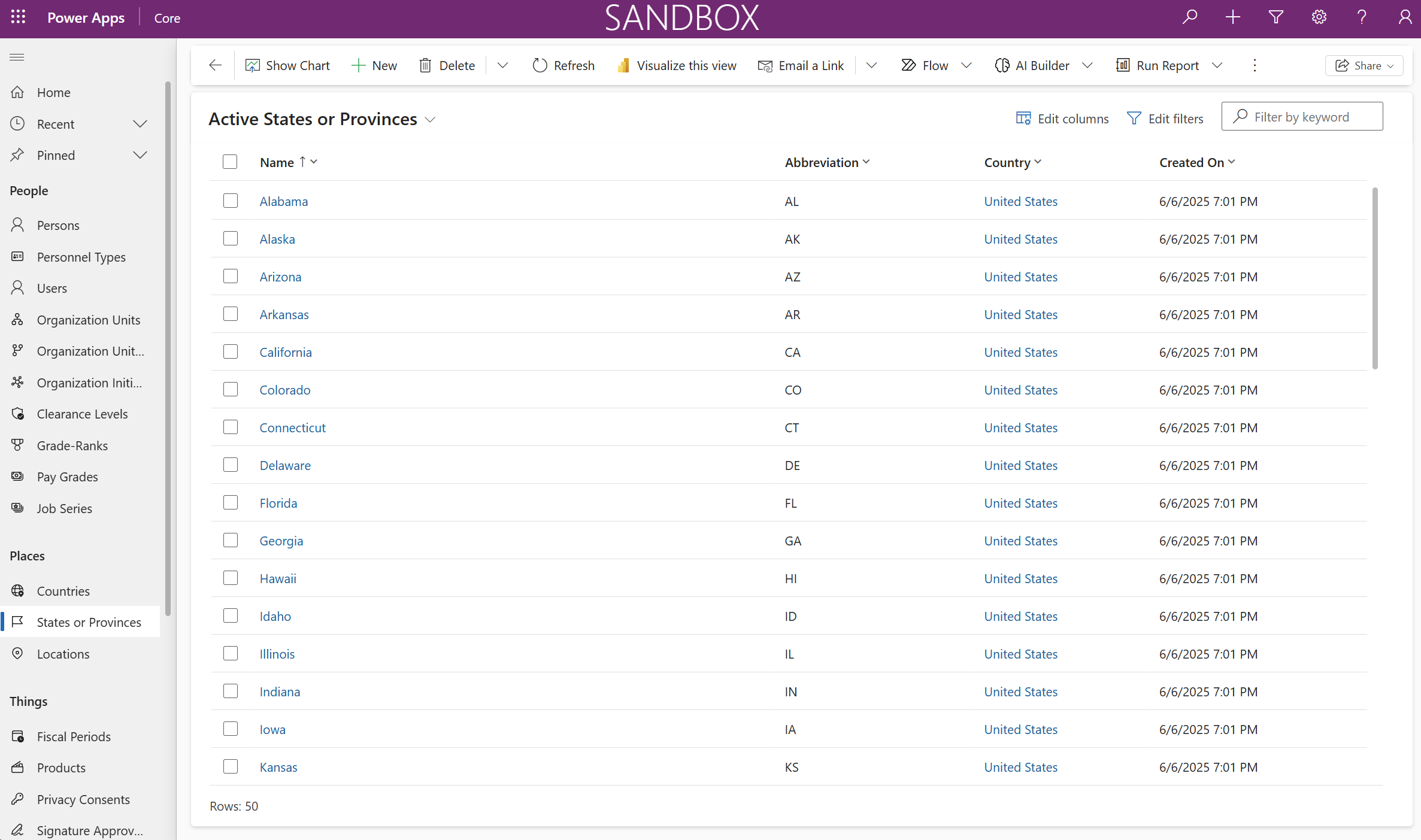
Locations

Fiscal Periods
Use Fiscal Periods to define standardized time intervals—such as fiscal years, quarters, and months—for budgeting, financial reporting, performance tracking, and project planning in federal programs. They enable consistent time-based analysis and alignment with government financial cycles.

Products
Use Products to represent goods, systems, or service offerings managed, procured, or delivered by an agency. Products support inventory tracking, service catalogs, procurement workflows, lifecycle management, and alignment with contracts or vendors.
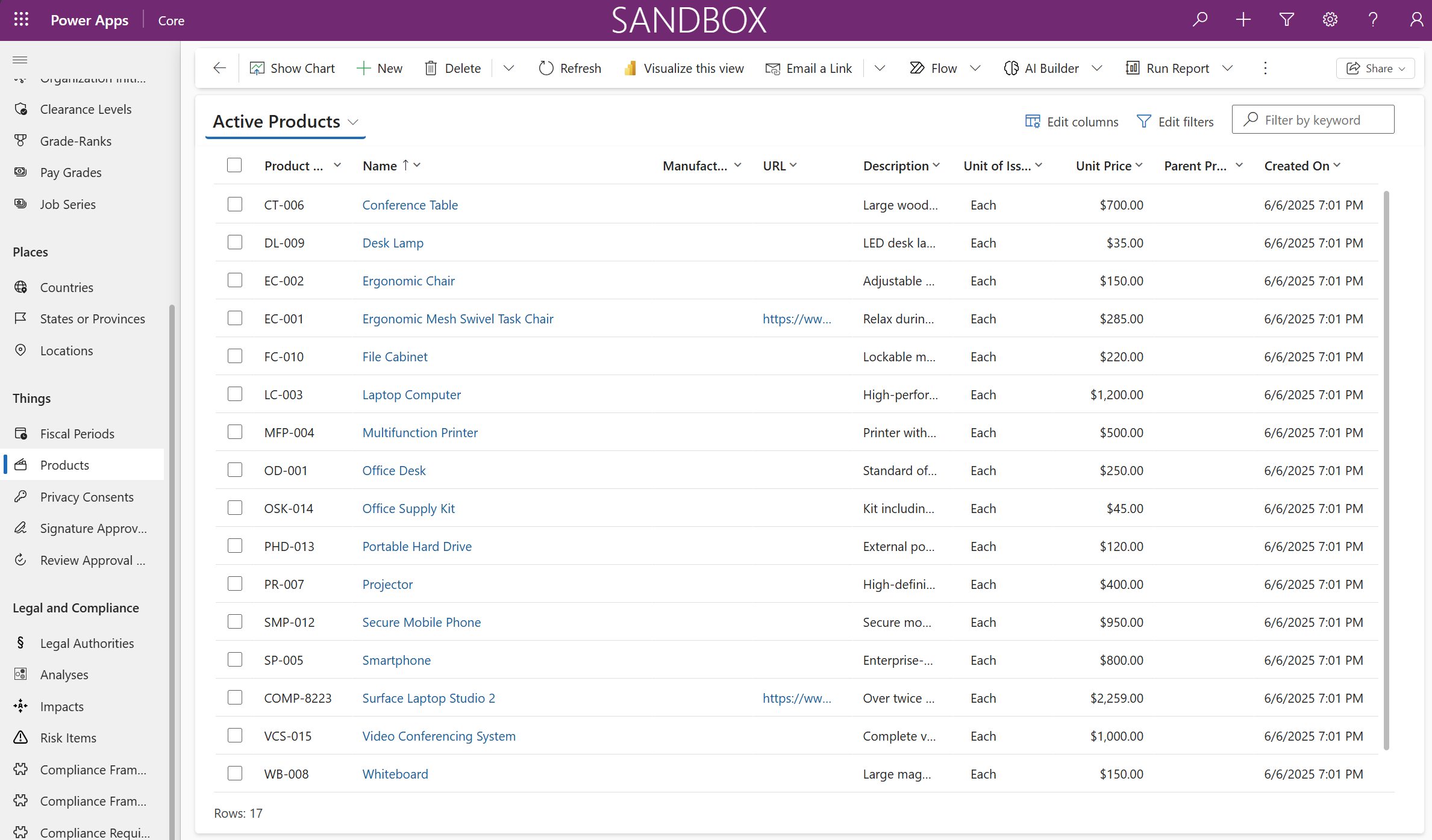
Privacy Consents
Use Privacy Consents to capture and manage an individual’s agreement to data collection, sharing, or usage in compliance with federal privacy policies, such as the Privacy Act or GDPR. They support auditability, transparency, and enforcement of consent-based data practices.

Legal and Compliance
Legal Authorities
Within Legal and Compliance, use Legal Authorities to reference statutes, regulations, executive orders, and other legal mandates that serve as the basis for federal policies, programs, and directives. They provide traceability, justification, and compliance context for agency actions and decisions.
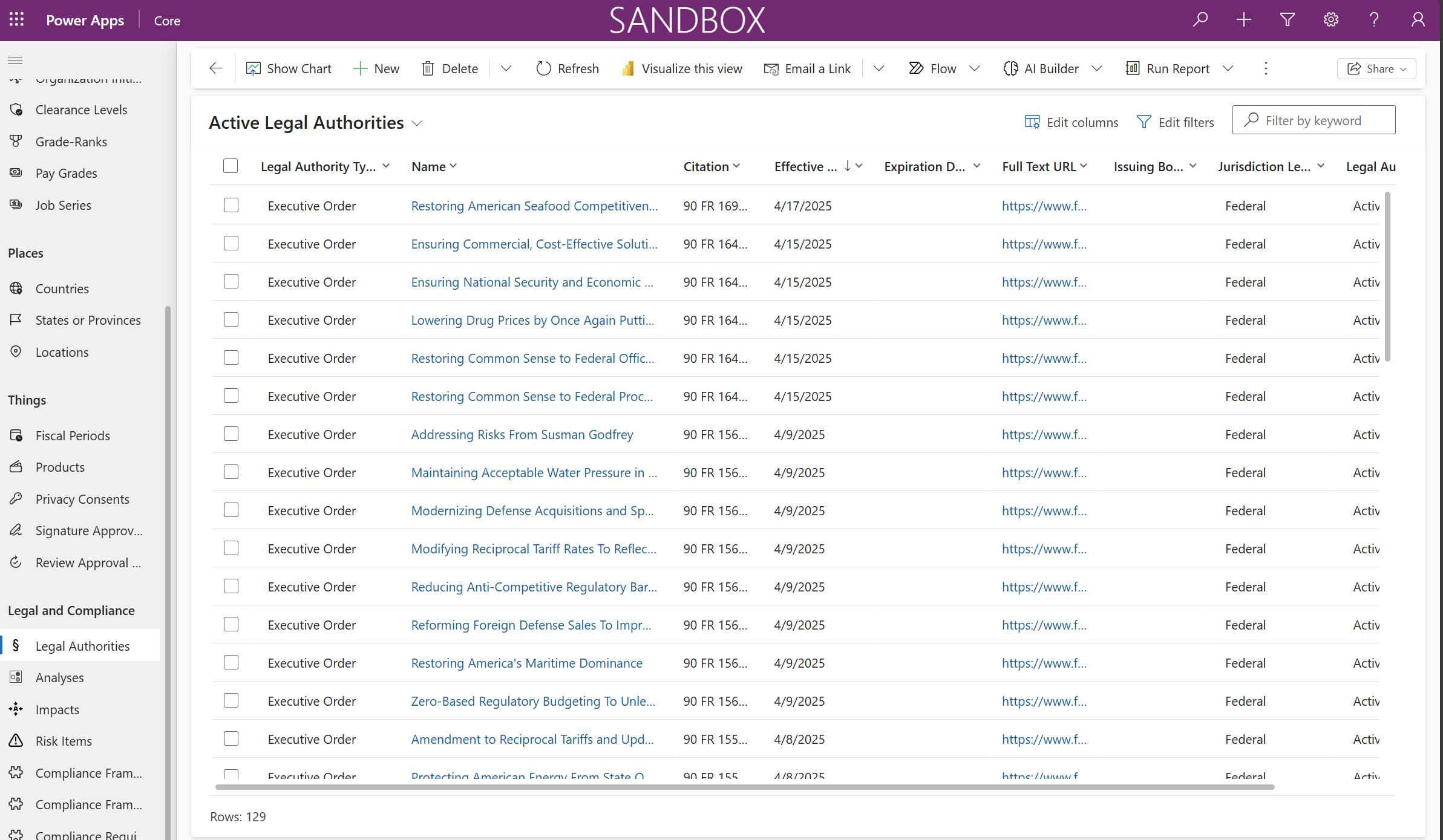
Analyses
Use Analyses to document structured evaluations, assessments, or studies conducted to inform decision-making, measure performance, assess risk, or evaluate program effectiveness. They support evidence-based policy, reporting, and strategic planning.
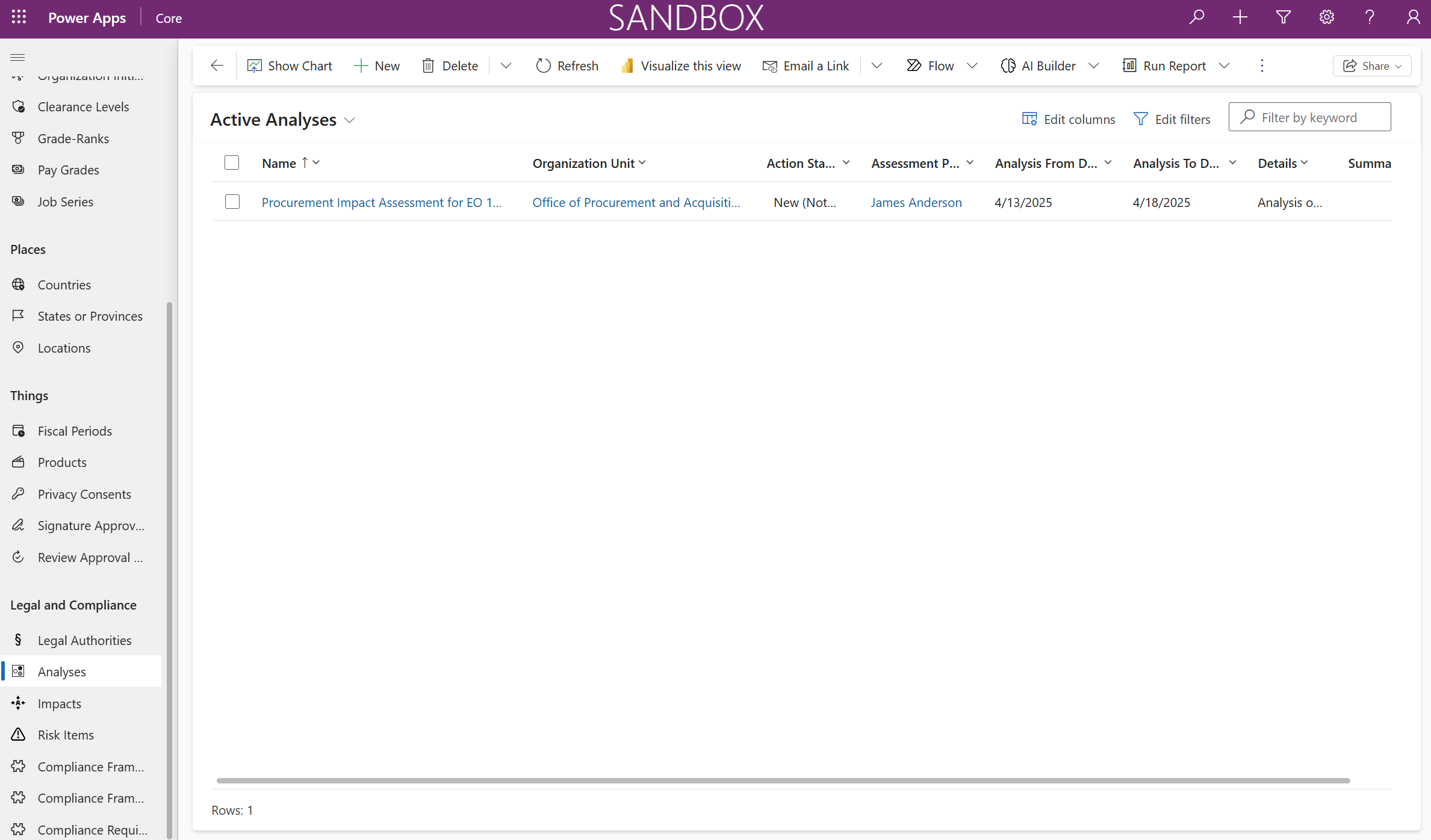
Use Impacts and Risk Items to capture the potential effects and uncertainties identified during an Analysis. You can use them standalone or group them under Analyses to support comprehensive evaluation, prioritization, and mitigation planning based on evidence and strategic context.
Impacts
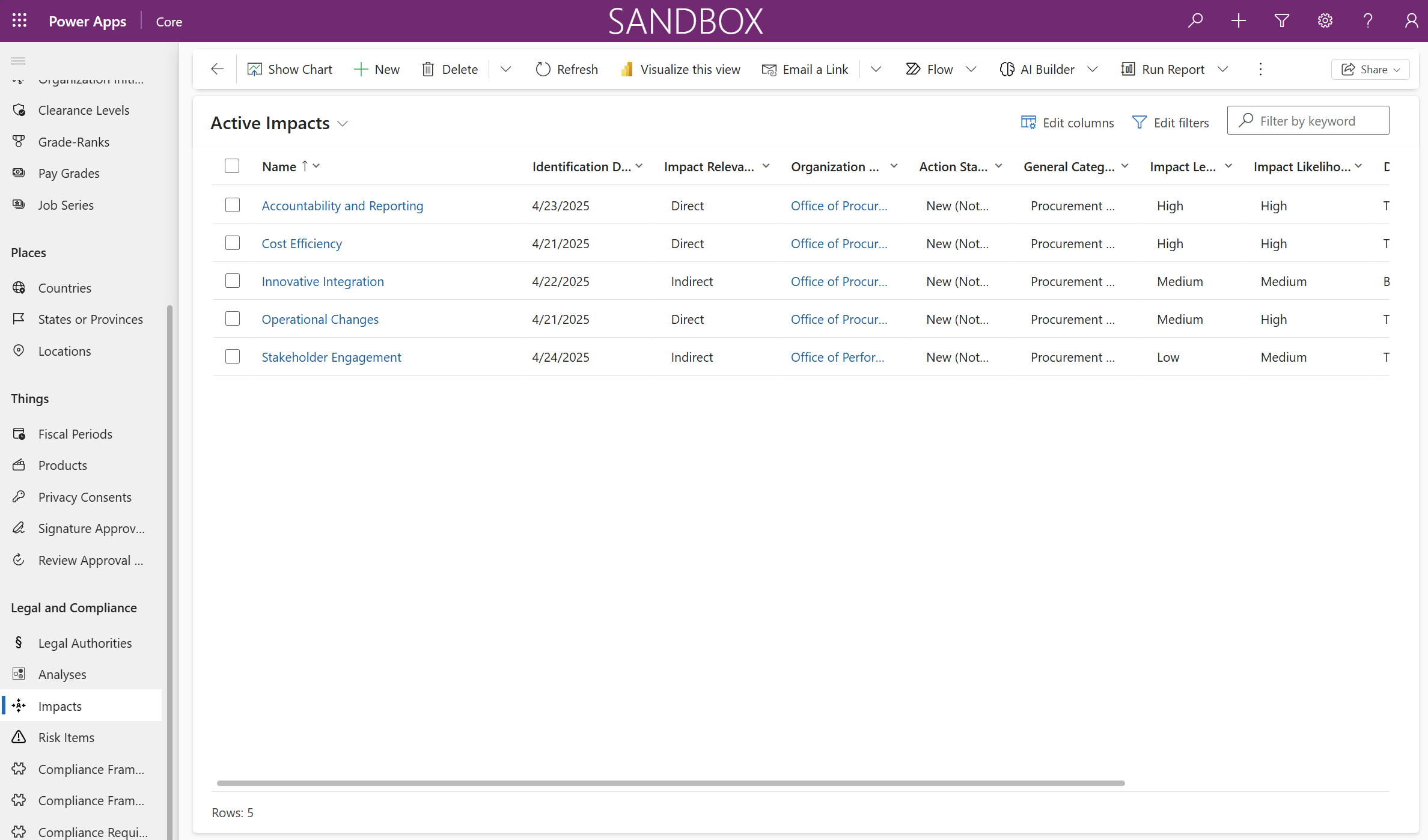
Risk Items
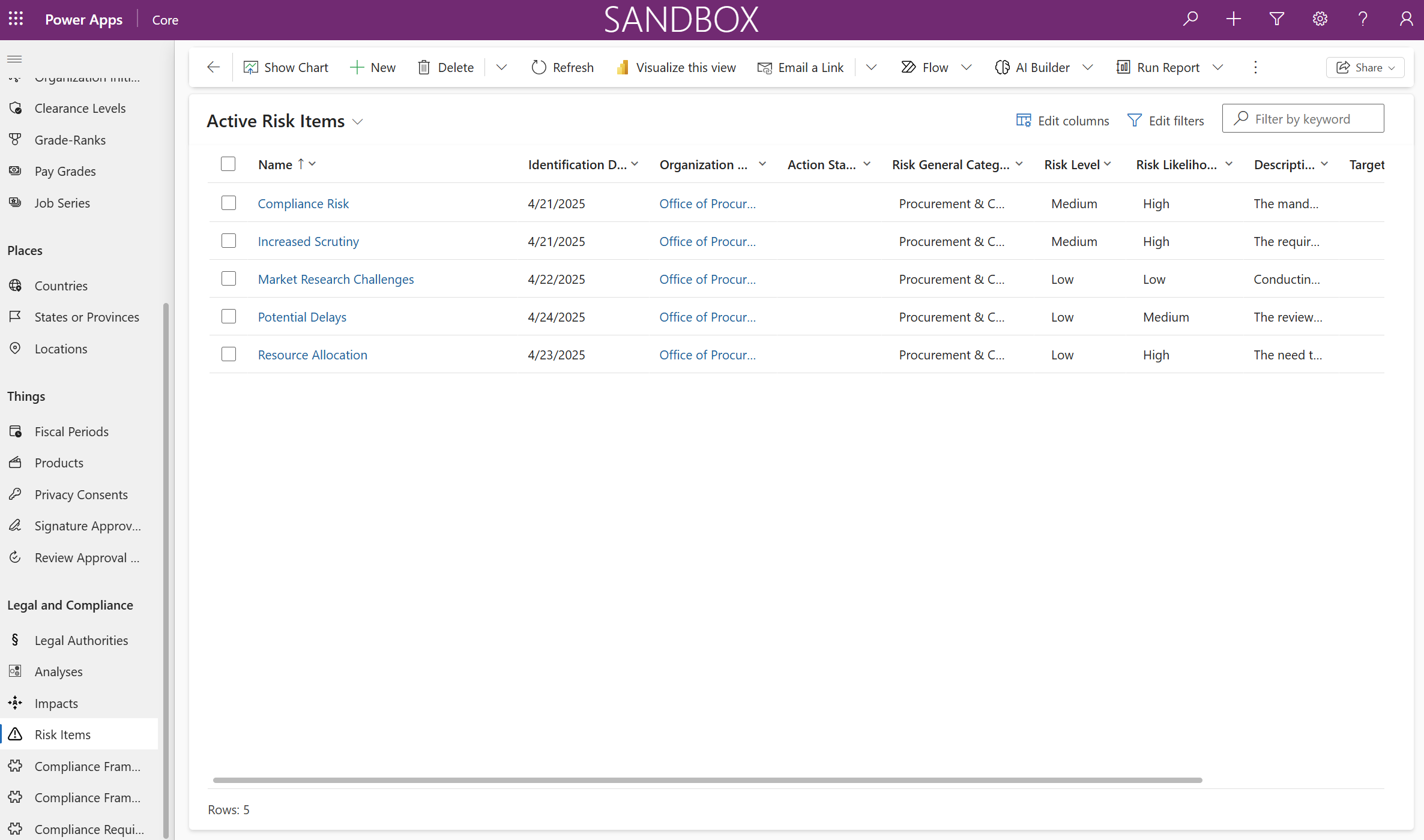
Compliance Frameworks
Use Compliance Frameworks to represent structured sets of federal standards, controls, or guidelines—such as FedRAMP, NIST SP 800-53, or FISMA—that govern security, privacy, and operational practices. They provide the foundation for managing agency compliance obligations.
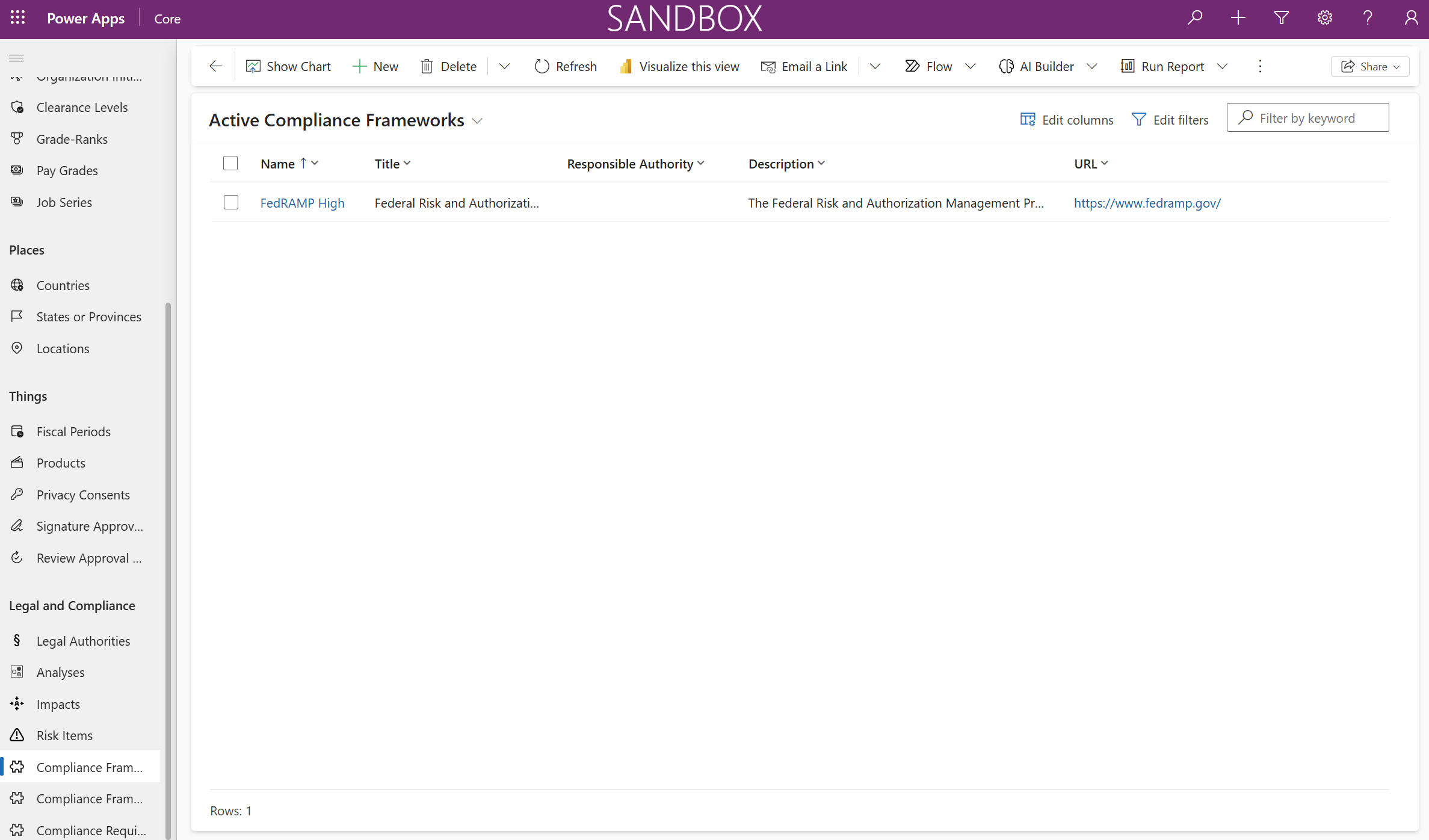
Compliance Framework Categories
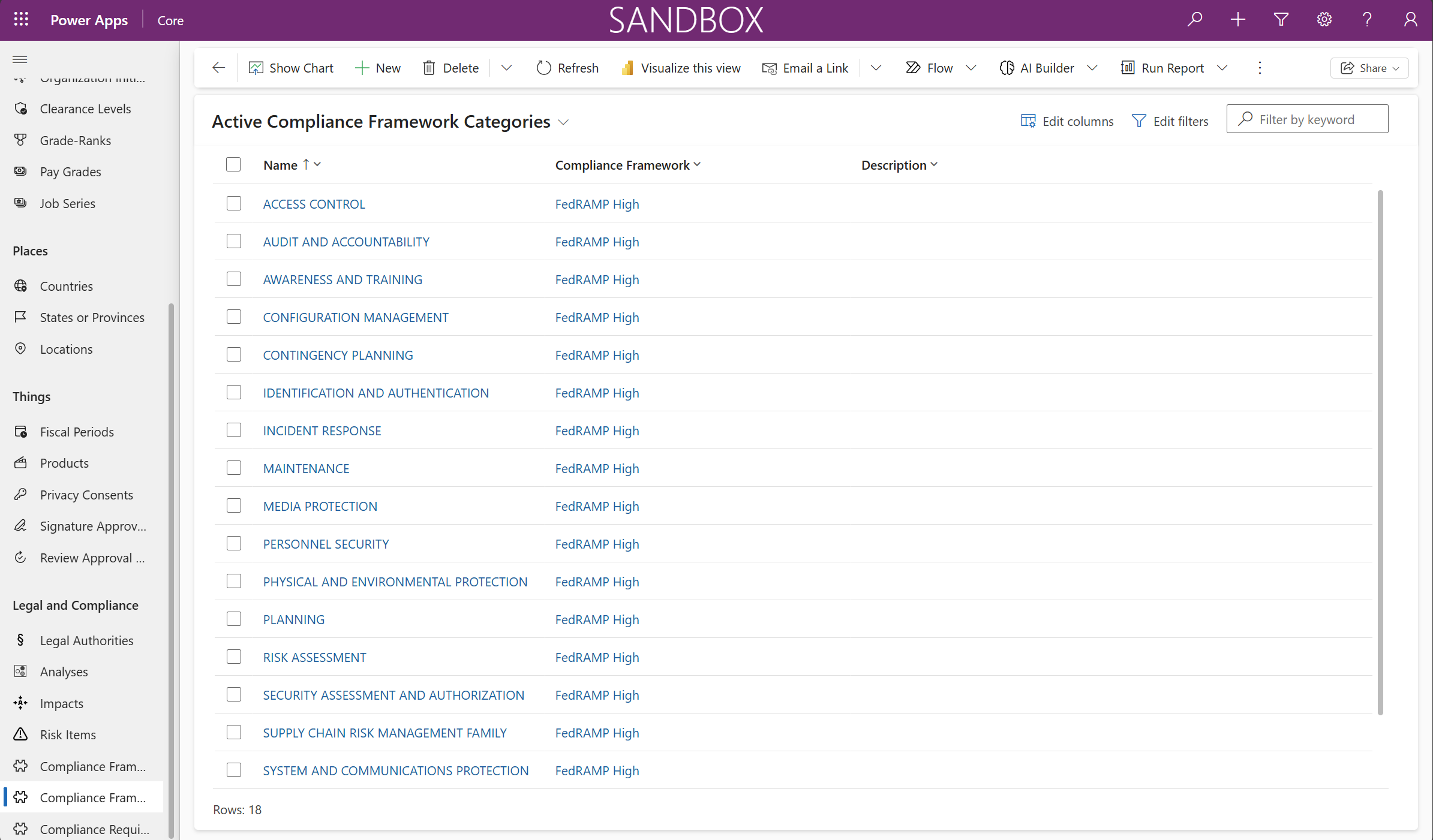
Compliance Requirements
And finally, use Compliance Requirements to define specific controls, rules, or obligations mandated by a Compliance Framework. Track their applicability, status, and evidence to support audits, assessments, and continuous monitoring.
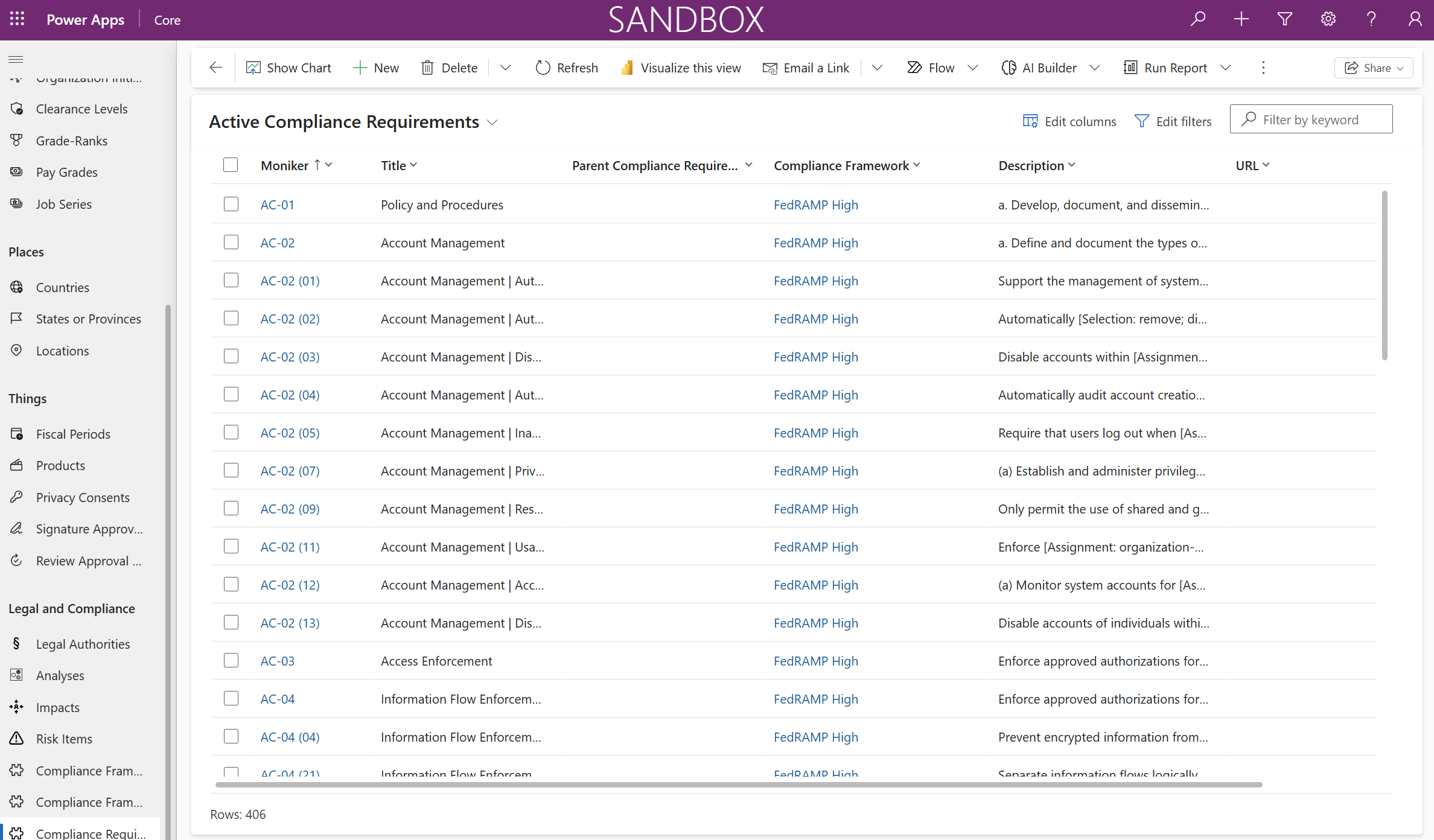
Summary
In summary, the Core Utility app is a centralized administrative tool that allows designated users to manage foundational reference and lookup data critical to enterprise operations. Organized into four intuitive groups—People, Places, Things, and Legal & Compliance—the app ensures consistent, reusable data across all modules. From clearance levels and job series to physical locations, products, and compliance frameworks, this utility supports clean data, simplifies configuration, and strengthens system-wide integrity.
Sample data
All data is fictitious and can be imported using the Sample-Data/Core data provided in the Gov CDM repo.

This is an open-source project maintained by Microsoft. It is not an official U.S. government website. The site uses the U.S. Web Design System (USWDS) to help agencies and partners create app catalog documentation sites of their own. Open Source at Microsoft
